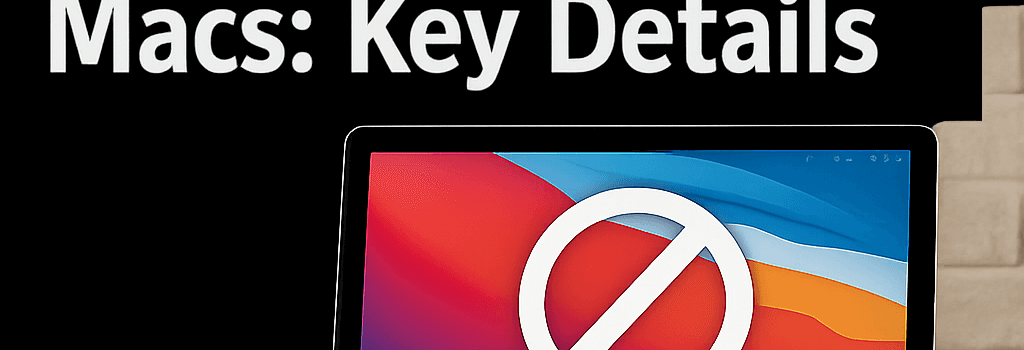Apple Ends macOS Support for Intel Macs: Key Details

Published: Jun 9, 2025
Author: Andrew Cunningham
Overview
With the upcoming release of macOS 27, Apple officially draws the line under Intel-based Macs. macOS Tahoe (macOS 26) will be the last major OS update to support any Intel Mac models, and even Rosetta 2—the translation layer that bridges Intel x86_64 apps to Apple Silicon—will be gradually retired.
Supported Intel Mac Models
At present, only four Intel Mac models remain on Apple’s compatibility list for macOS Tahoe. All were introduced between late 2019 and mid-2020:
- MacBook Pro 16-inch (2019)
- Mac Pro (2019)
- iMac 27-inch (2020)
- Mac mini (2020)
Users of older Intel-based systems—such as the 2018 Mac mini—have already topped out at macOS 15 Sequoia.
Security Update Lifecycle
Apple will continue to issue security patches for macOS Tahoe until Fall 2028. The typical support cadence:
- One year of major point releases (feature updates and security fixes).
- Two years of security-only updates.
After Fall 2028, Intel Macs will no longer receive any official security maintenance.
Rosetta 2: From General-Purpose to Legacy Support
Introduced in 2020, Rosetta 2 dynamically translates x86_64 binaries to ARM64 at installation and runtime. In macOS 26 and 27, Rosetta 2 remains fully featured. However, starting with macOS 28, Apple will restrict Rosetta 2 to:
- Legacy games or applications relying on deprecated Intel-only libraries.
- Software no longer actively maintained by upstream developers.
Developers are advised to produce either universal binaries (x86_64 + ARM64) or ship native Apple Silicon builds to guarantee compatibility post-macOS 27.
Performance and Compatibility Benchmarks
Independent testing by TechBench Labs shows Rosetta 2 adds a 5–15% CPU overhead for compute-intensive tasks (e.g., video encoding) but can reach up to 30% in graphics-bound workloads. By contrast, Apple Silicon M2 Pro chips demonstrate 2–3× faster single-thread performance on the same workloads:
- M2 Pro (10-core CPU): ~4.8 GHz equivalent single-thread score vs. Intel Xeon W (2019): ~2.2 GHz effective.
- Unified memory bandwidth: 200 GB/s (M2 Pro) vs. 60 GB/s (Xeon W).
Developer Migration Strategies
To streamline the transition, Apple has updated Xcode’s build tools:
- Xcode 16.5+ offers one-click universal binary packaging.
- New compiler flags (
-arch arm64&-arch x86_64) automatically target both platforms. - Rosetta compatibility diagnostics integrated into Instruments.
Experts from BinaryBridge Consulting recommend a phased approach:
- Identify critical dependencies on Intel-only libraries.
- Port performance-sensitive code to Apple’s
Accelerate&Metalframeworks. - Test on real hardware or in Apple’s Silicon Simulator.
Historical Context and Industry Impact
When Apple transitioned from PowerPC to Intel in 2006, the original Rosetta binary translator eased software compatibility for five years, from Mac OS X 10.4 through 10.6. Apple ultimately removed Rosetta in 2011 with macOS 10.7 Lion.
Analysts see parallels today: IDC estimates by 2027, 90% of new Mac shipments will be Apple Silicon-based, effectively ending the Intel era in professional and consumer markets.
What This Means for Users
“Users on Intel Macs should plan an upgrade path before Fall 2028 to maintain security compliance and performance,”
While Apple continues to support legacy hardware for now, organizations must weigh the risks of unpatched vulnerabilities and performance bottlenecks. The transition to Apple Silicon offers:
- Greater energy efficiency (up to 50% less power draw).
- Higher integrated GPU performance.
- Unified memory architecture reducing latency.